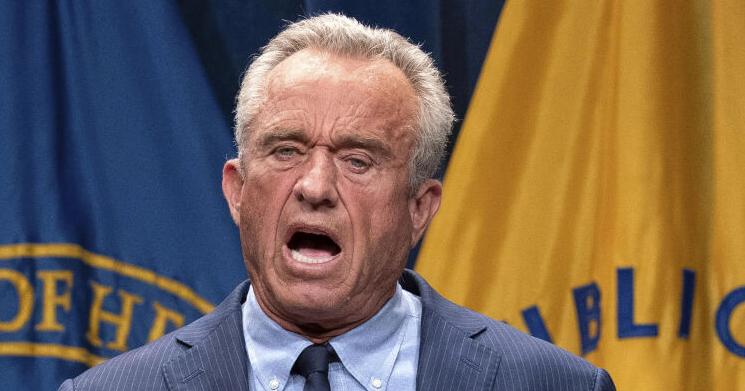Last week, Thursday, was Major League Baseball’s Opening Day, despite the fact that the Dodgers and Cubs had played two official games in Japan the week before.
There are those who have proposed baseball’s Opening Day be a national holiday. What a good idea: Take the day off and go to a game, or watch your favorite team on TV.
Today’s history lesson, baseball fans, answers the question, “Has there ever been a no-hitter thrown on Opening Day in the Major Leagues?”
In fact, there have been two, though until last year only one was acknowledged.
On April 16, 1940, before 14,000 fans in Chicago’s cavernous Comiskey Park (capacity 50,000) on a cold and blustery day, 21-year-old Bob Feller of the Cleveland Indians defeated the White Sox, 1-0, facing only 27 batters, allowing no hits, a walk and an error spoiling his bid for a perfect game.
Feller was a prodigy, a farm boy from the little town of Van Meter, Iowa, who signed with the Indians at age 16 and won 31 big league games before the age of 20. In 1939, at 20, he won 24 games (against nine losses) for the third-place Indians. In his 18-year career with the Indians, he pitched two other no-hitters and 12 one-hitters.
In 1940, after his no-hit start, he had a year for the ages, leading the league in wins (27), earned run average, strikeouts, shutouts, games started, and complete games. The next year, he was nearly as good, winning 25 games. He was the best pitcher in the game in the 1940s. Ted Williams called him “the fastest and best pitcher I ever saw during my career.”
In 1942, he won no games, nor in ’43 or ’44. Two days after Pearl Harbor was bombed (December 7, 1941), Feller volunteered for military service, the first American professional athlete to do so. “I wanted to do something other than standing around handing out bats and balls,” so he enlisted for combat duty in the Navy and served as a gun captain on the USS Alabama in the Pacific theater, earning five combat ribbons and eight battle stars. He was made an honorary Navy Seal later in his life.
In his first full season back from the War, 1946, he was again dominant, leading the Majors in wins (26), strikeouts (348), innings pitched (371), shutouts (10), with a minuscule ERA of 2.15. As with his contemporary Williams, who missed nearly five full years in his prime to military service, one can only imagine what Feller’s lifetime statistics might have been had he played from ages 23-26.
Also like Ted Williams, Feller respected the great skills and worth of Black players. In October of 1946, Feller organized a barnstorming tour of exhibitions with the great Black pitcher Satchel Paige. At a time when air-travel for ball teams was unheard of, Feller chartered two DC-3s and the Bob Feller All-Stars played the Satchel Paige All-Stars in 35 games in 32 cities across the country in 27 days. Feller was an entrepreneur as well as ballplayer.
Bob Feller, “Rapid Robert,” was elected to Baseball’s Hall of Fame in 1962, his first year of eligibility.
Until last year, Feller’s gem was considered MLB’s only Opening Day no-hitter. Now that statistics from actual box scores of Negro League games from 1920-1948 are official MLB stats, we have another historic no-hitter.
LEON DAY OF the Newark Eagles pitched an Opening Day no-hitter in 1946 defeating the Kansas City Monarchs 2-0. Day was elected to Baseball’s Hall of Fame in 1995.
Painting by Graig Kreindler, used with the permission of Jay Caldwell
On May 15, 1946, in Newark’s Ruppert Stadium, before 8,614 fans, Newark Eagles pitcher Leon Day faced only 29 batters in a superb effort (he walked one and the Eagles behind him made two errors), allowing no hits in defeating the Philadelphia Stars, 2-0.
Day is often compared to his celebrated contemporary Satchel Paige but is his opposite number in most respects: Paige was tall and slender (6’3”, 189 pounds); Day was short and compact (5’9”, 170); Paige was flamboyant and self-promoting; Day was humble, low-key, workmanlike. His teammate with Newark Hall of Famer Monte Irvin said of Day, “Leon was as good as Satchel Paige, as good as any pitcher who ever lived, but he never made any noise.”
Larry Doby, another of Day’s teammates on the Eagles in 1946, and the first Black player in the American League when he suited up for Cleveland in 1947, said: “Day could throw as hard as anyone . . . I didn’t see anybody in the major leagues was better than Leon Day. Tremendous curveball and a fastball at 90-95 miles an hour. You talk about Satchel; I didn’t see anyone better than Day.”
Simply put, Day was a baseball player: he’s in the Hall of Fame as a pitcher, but he played every day. Negro League teams could not afford to have rosters the size of their MLB brethren. On his “days off,” Day played second base or centerfield. “He played centerfield as good or better than our starting centerfielder did,” Irvin said. “The center fielder at that time was me.”
Like Bob Feller and Ted Williams, Leon Day also lost time in his prime to military service in World War II. Drafted into the Army, he spent two and a half years, 1944-45, in a segregated amphibian unit that landed on Utah Beach during the Allied invasion of France.
Leon Day’s first foray in the Negro Leagues was with the hometown Baltimore Black Sox in 1934, but he spent the bulk of his career with the Newark Eagles. Effa Manley, the only woman in Baseball’s Hall of Fame, ran the Eagles and led it to great success in the 1940s.
In 1946, the Eagles started the season with Day’s no-hitter and went on to be Negro League Champs, defeating the Kansas City Monarchs of the Negro American League in the NL World Series. Day led the league in wins with 13 (Negro League seasons were shorter than MLB’s) and batted over .400.
Leon Day was elected to Baseball’s Hall of Fame in 1995, five days before his death in Baltimore at 77.
In the long history of organized baseball (the National League was organized in 1876), just two Opening Day no-hitters have been thrown, as it happened by two brilliant pitchers, contemporaries, Bob Feller of the Cleveland Indians and Leon Day of the Newark Eagles.
Karl Lindholm can be contacted at [email protected].
(I am indebted to Graig Kreindler and Jay Caldwell for permission to use Graig’s stunning baseball art. Graig has painted 230 portraits of historic Black ballplayers in a collection that has been exhibited throughout the country and can been seen in Jay’s beautiful book “Black Baseball in Living Color: the Artwork of Graig Kreindler.” – KL)















